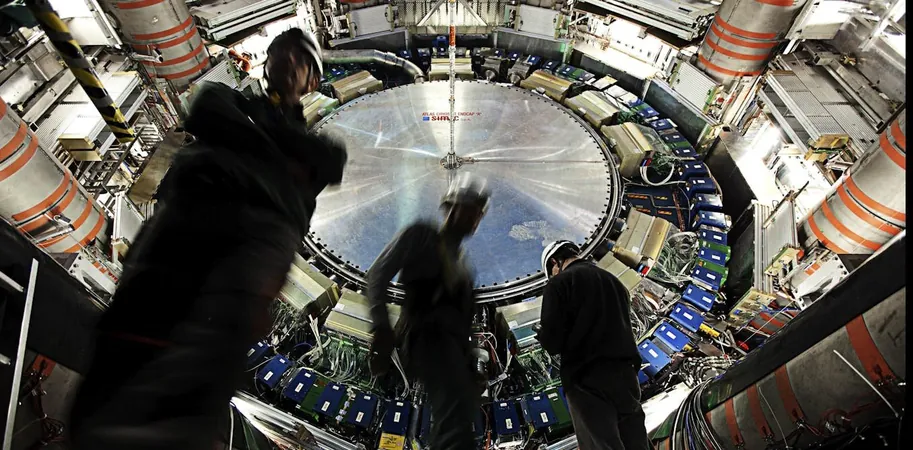
Quantum Weirdness Unveiled: Top Quarks Show Entanglement in Shocking New Experiment!
2024-09-21
A groundbreaking discovery has emerged from the Large Hadron Collider (LHC) in Geneva, where scientists have detected quantum entanglement in pairs of top quarks—the heaviest particles known to physics. This remarkable finding, published in a recent paper in Nature by the ATLAS collaboration, adds a new dimension to our understanding of the quantum realm.
What is Quantum Entanglement?
Quantum entanglement is one of the most mind-boggling aspects of quantum physics, where two or more particles become interconnected in such a way that the state of one instantly influences the state of the other, no matter the distance separating them. It’s a phenomenon that challenges our classical intuition about how objects interact.
To illustrate, imagine you have two entangled particles. If you measure the state of one, you will immediately know the state of the other—even if it is light-years away! This peculiar behavior has been famously depicted in science fiction but is now a verified aspect of our reality.
Previously, entanglement was primarily observed in lightweight particles like photons. The recent detection of entanglement in top quarks is exciting because it signifies that even the heaviest known particles exhibit this strange quantum behavior.
The Mystery of Top Quarks
To grasp the enormity of this finding, we need to delve into the structure of matter itself. Atoms consist of electrons orbiting a dense nucleus, composed of protons and neutrons. These protons and neutrons, it turns out, are made up of quarks—fundamental particles that come in six varieties: up, down, top, bottom, charm, and strange.
Among these, the top quark stands out with its enormous mass—184 times that of a proton! This begs the question: why is the top quark so heavy? Scientists postulate that its mass may be an indicator of new physics and undiscovered forces beyond our current comprehension of the universe.
A New Era of Quantum Experiments
The achievement made by the ATLAS experiment shows that entanglement is not confined to light or low-energy particles but can also manifest in the volatile and energetic world of heavy quarks. Despite quantum entanglement being a widespread phenomenon, it is notoriously delicate, often requiring controlled environments like ultra-cold temperatures to maintain its integrity.
The peculiarities of the top quark provide a unique laboratory for exploring these exotic physical properties. While using top quarks for practical technologies may not be feasible (after all, the LHC is massive and immovable), their study could illuminate the pathways to understanding fundamental interactions and potentially lead to revolutionary advancements in quantum computing and other fields.
Is This the Key to New Physics?
The revelation that top quarks can be entangled opens new avenues for research in quantum physics. It suggests that there could be more to discover about the forces and particles that make up our universe. The physics community remains eager to see what these findings will reveal about the nature of reality and the potential for unraveling the mysteries associated with dark matter, new forces, and the intriguing concept of 'new physics.'
Stay tuned, as science continues to push the boundaries of our understanding—who knows what other astonishing secrets lie hidden in the quantum realm!

 Brasil (PT)
Brasil (PT)
 Canada (EN)
Canada (EN)
 Chile (ES)
Chile (ES)
 España (ES)
España (ES)
 France (FR)
France (FR)
 Hong Kong (EN)
Hong Kong (EN)
 Italia (IT)
Italia (IT)
 日本 (JA)
日本 (JA)
 Magyarország (HU)
Magyarország (HU)
 Norge (NO)
Norge (NO)
 Polska (PL)
Polska (PL)
 Schweiz (DE)
Schweiz (DE)
 Singapore (EN)
Singapore (EN)
 Sverige (SV)
Sverige (SV)
 Suomi (FI)
Suomi (FI)
 Türkiye (TR)
Türkiye (TR)